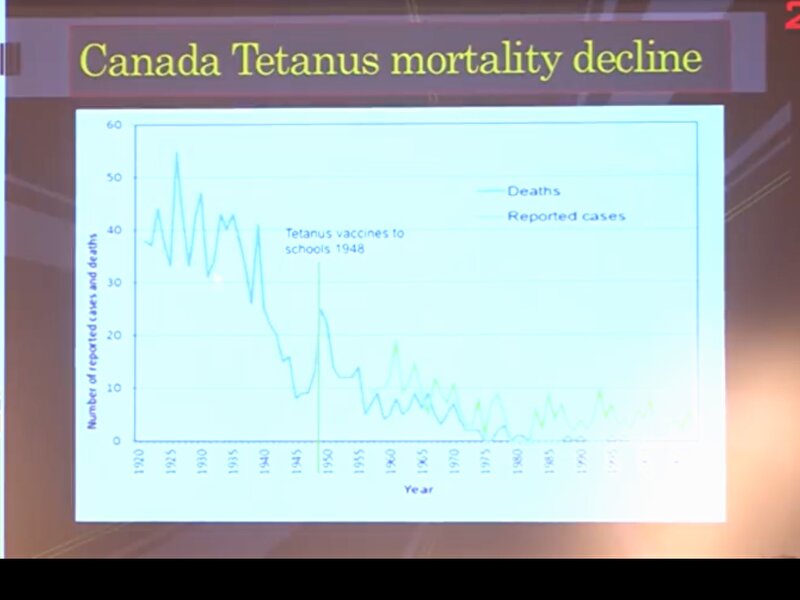"Diseases had already begun to disappear before vaccines were introduced, because of better hygiene and sanitation".
Statements like this are very common in anti-vaccine literature, the intent apparently being to suggest that vaccines are not needed. Improved socioeconomic conditions have undoubtedly had an indirect impact on disease. Better nutrition, not to mention the development of antibiotics and other treatments, have increased survival rates among the sick; less crowded living conditions have reduced disease transmission; and lower birth rates have decreased the number of susceptible household contacts. But looking at the actual incidence of disease over the years can leave little doubt of the significant direct impact vaccines have had, even in modern times.
For example, there have been periodic peaks and valleys throughout the years, but the real, permanent drop in measles incidence coincided with the licensure and wide use of measles vaccine beginning in 1963. Other vaccine-preventable diseases show a roughly similar pattern in incidence, with all except hepatitis B showing a significant drop in cases corresponding with the advent of vaccine use. (The incidence of hepatitis B has not dropped as much because infants vaccinated in routine programs will not be at high risk of disease until they are at least teenagers. Therefore a 15-year lag can be expected between the start of routine infant vaccination and a significant drop in disease incidence.) Haemophilus influenzae type b (Hib) vaccine is another good example, because Hib disease was prevalent until the early- to mid- 1990s, when conjugate vaccines that can be used for infants were finally developed. (The polysaccharide vaccine previously available could not be used for infants, in whom most cases of the disease were occurring.)
Are we expected to believe that better sanitation caused incidence of each disease to drop just at the time a vaccine for that disease was introduced? Since sanitation is not better now than it was in 1990, it is hard to attribute the virtual disappearance of Hib disease in children in recent years in countries with routine Hib vaccination (from an estimated 20,000 cases a year to 1,419 cases in 1993, and dropping in the United States of America) to anything other than the vaccine.
Bron


